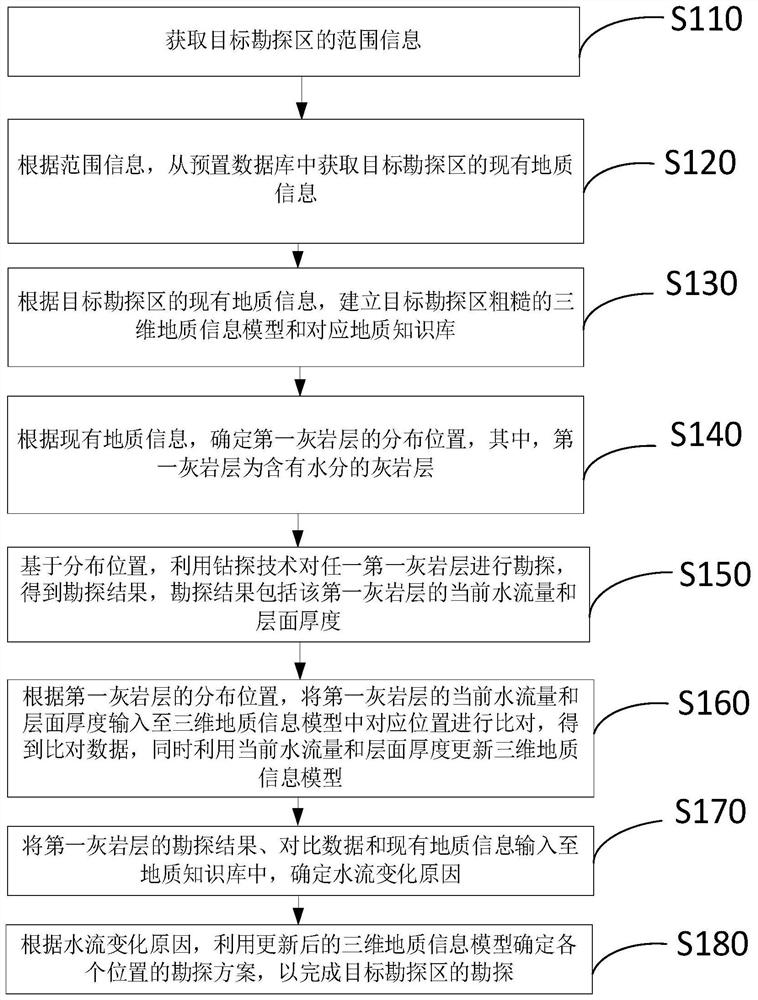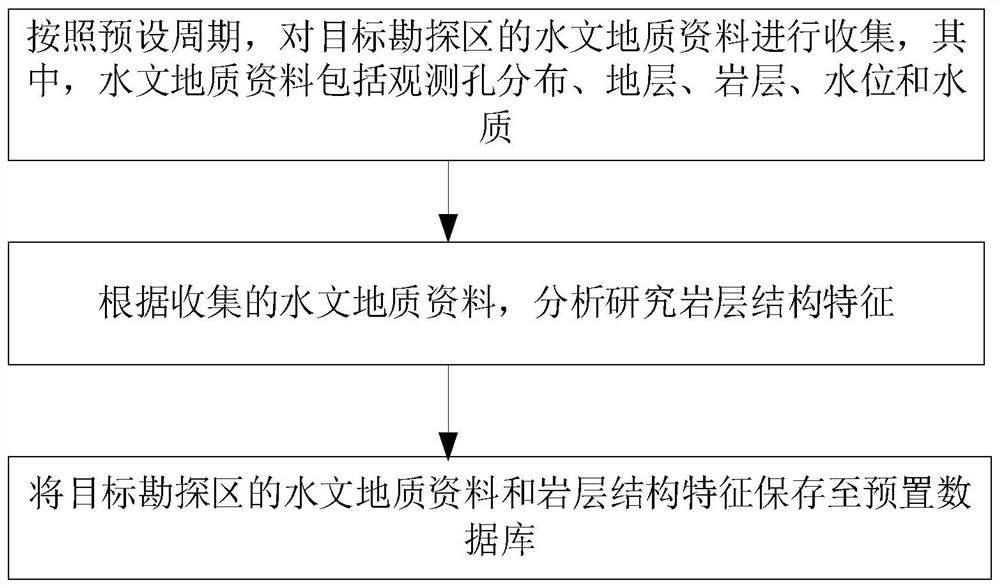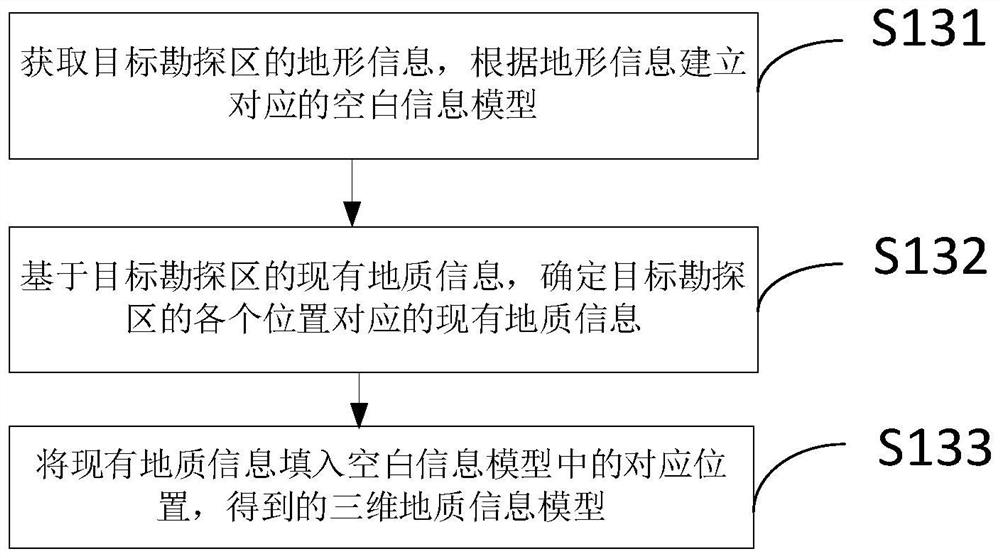Hydrogeological exploration method and device
A hydrogeological and geological technology, applied in the field of geological exploration, can solve the problems of low accuracy and availability of survey information, low exploration efficiency, time-consuming and labor-intensive problems, etc.
- Summary
- Abstract
- Description
- Claims
- Application Information
AI Technical Summary
Problems solved by technology
Method used
Image
Examples
Embodiment
[0060] Please refer to figure 1 , figure 1 Shown is a flow chart of a hydrogeological exploration method provided by an embodiment of the present invention. The embodiment of the present application provides a hydrogeological exploration method, which includes the following steps:
[0061] S110: Obtain the scope information of the target exploration area;
[0062] Specifically, the above-mentioned hydrogeology refers to various changes and movements of groundwater in nature. Hydrogeology mainly studies the distribution and formation rules of groundwater, the physical properties and chemical composition of groundwater, groundwater resources and their rational use, and the impact of groundwater on engineering Adverse effects of construction and mining and their prevention and control.
[0063] Wherein, the scope information of the target exploration area includes longitude and latitude information of the boundary of the target exploration area.
[0064] S120: According to th...
PUM
 Login to View More
Login to View More Abstract
Description
Claims
Application Information
 Login to View More
Login to View More - R&D
- Intellectual Property
- Life Sciences
- Materials
- Tech Scout
- Unparalleled Data Quality
- Higher Quality Content
- 60% Fewer Hallucinations
Browse by: Latest US Patents, China's latest patents, Technical Efficacy Thesaurus, Application Domain, Technology Topic, Popular Technical Reports.
© 2025 PatSnap. All rights reserved.Legal|Privacy policy|Modern Slavery Act Transparency Statement|Sitemap|About US| Contact US: help@patsnap.com



